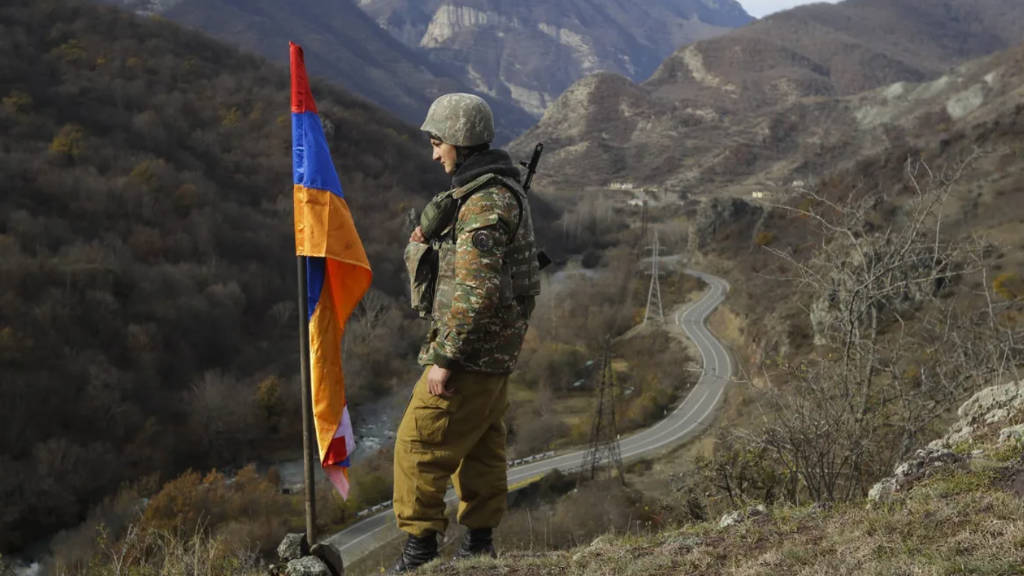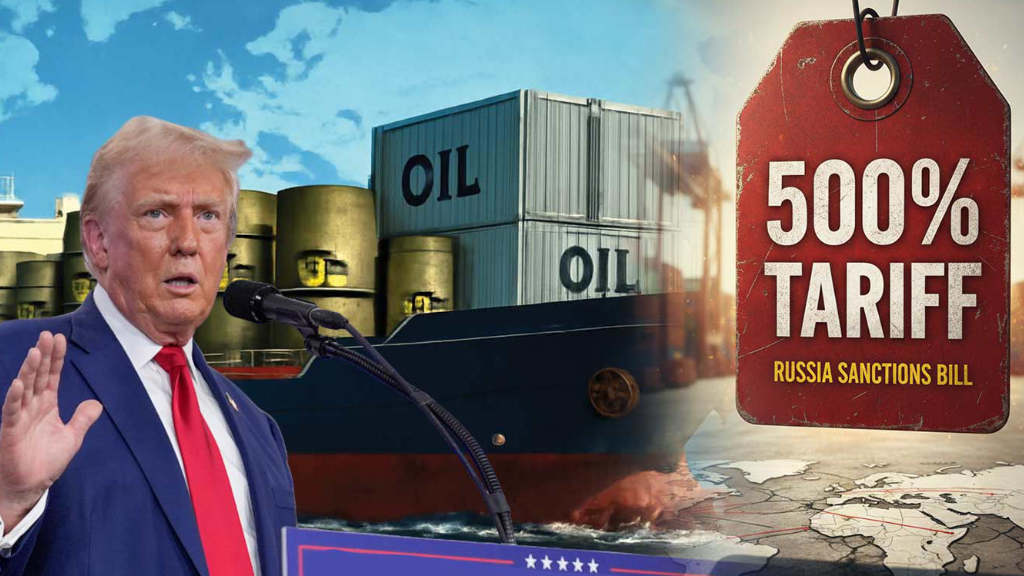The opening of the Zangezur Corridor between Armenia and Azerbaijan, dressed up by Washington as the ‘Trump Route for International Peace and Prosperity’ has been announced by President Trump during meetings with Armenian Prime Minister Nikol Pashinyan and Azerbaijani President Ilham Aliyev at the White House. We discuss the background and implications of this.
Nagorno-Karabakh
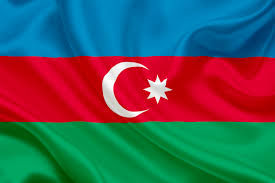
The arrangement brings to a close the contemporary regional conflicts between Armenia and Azerbaijan. These have included two main areas, firstly the Nagorno-Karabakh region, which had been undergoing conflict for over 30 years with bilateral claims on the region occasionally breaking out into military violence.
Nagorno-Karabakh, claimed by both sides, was part of Greater Armenia (Artsakh) as one of her provinces. In the middle of the 18th century, the territories of Nagorno-Karabakh became part of the Karabakh Khanate. In the early 19th century, as a result of the Russo-Persian War of 1804-1813, the Karabakh Khanate became part of Russia, and in 1822 it was transformed into a province of the Russian Empire. In Soviet times, Karabakh, with more than 90% of Armenian population, was subordinated to the Azerbaijan SSR, with a predominantly Muslim population, “based on the need for national peace between Azerbaijani Muslims and Armenian Christians.” During the Soviet period, the Armenian leadership repeatedly raised the issue of transferring Karabakh under its jurisdiction, but did not receive the support of the allied leadership, while Moscow suppressed any violence between the two sides.
The situation changed after the collapse of the Soviet Union in 1991, when Armenia and Azerbaijan declared independence, and Moscow’s influence weakened. In January 1992, Nagorno-Karabakh declared independence, which marked the beginning of an open armed confrontation between Armenia and Azerbaijan for control of the region. Since then, Nagorno-Karabakh has become a flashpoint between Armenia and Azerbaijan, leading to a war in 2021-22, in which Azerbaijan gained the upper hand. In January 2024, the President of the Nagorno-Karabakh Republic signed a decree on its abolition, and the disputed territory became part of Azerbaijan.
Nakhichevan
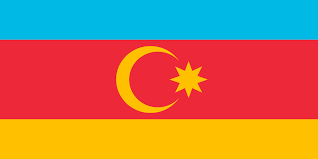
In addition to this, Azerbaijan also possesses a narrow strip of land – the Nakhichevan Autonomous Republic which is separated from the Azerbaijan mainland and borders Armenia, Iran and Turkiye.
In medieval times, Nakhichevan was located at the crossroads of the trade routes of the Great Silk Road. The Nakhichevan Khanate was part of Iran, then, after the Russian-Persian War of 1826-28, it was annexed to Russia and merged with the Erivan Khanate into the Armenian region. In 1921, the borders of Nakhichevan were defined between Soviet Russia and Turkiye, and the status of an “autonomous territory under the protection of Azerbaijan was assigned to it, provided that Azerbaijan would not cede this protectorate to any third state.”
During the Soviet period, transport links between Azerbaijan and Nakhichevan were carried out via the highway and the Transcaucasian Railway. After the collapse of the Soviet Union and the outbreak of the First Karabakh Conflict (1992-1994), the railway line was dismantled, which led to the cessation of land connections between the main part of Azerbaijan and its exclave. Currently, it is possible to get from the western regions of the country to Nakhichevan only by air or through the territory of Iran. The Zangezur Corridor is a transport corridor project with a length of about 40 km through the territory of the Syunik region of Armenia to provide transport links between the western regions of Azerbaijan and its exclave, the Nakhichevan Autonomous Republic.
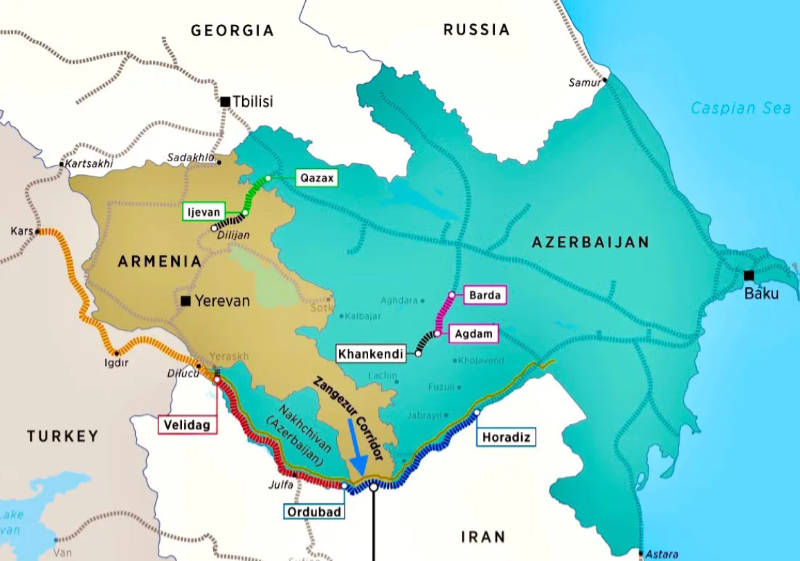
Zangezur
The Armenian and Azerbaijani authorities began discussing the concept of the Zangezur corridor after the First Karabakh War. The idea was again voiced after the Second Karabakh War in 2020, when Azerbaijan took control of a significant part of the territories of Nagorno-Karabakh.
Azerbaijan considers the Zangezur Corridor as a strategic project that will provide direct land communication between the main part of the country and the Nakhichevan Autonomous Republic, which was interrupted more than 30 years ago. Yerevan categorically rejected the concept of the Zangezur corridor in the form proposed by Baku.
Tehran, like Armenia, has expressed concern about the construction of the Zangezur corridor and considers it a potential threat to its national interests and regional influence. Nevertheless, the Zangezur corridor, which will become an integral part of the Trans-Caspian Corridor (Middle Corridor/TMTM) project, may offer shippers a route through Armenia, NAR and Turkey, where new markets will open up for suppliers of goods. China is interested in infrastructure development and investments in this region, as the Trans-Caspian Corridor is a link in China’s Belt & Road Initiative. In this sense, the resumption of the route may be beneficial to Moscow, as it can also be integrated into the International North-South Transport Corridor between Russia and Iran, with onward transit to the Middle East, East Africa and South Asia.
However, relations between Moscow and Armenia have cooled in recent years. Armenia, which is a member of the Eurasian Economic Union, has also expressed interest in joining the European Union – ir cannot be a member of both. .
It has also stopped participating in the Collective Security Treaty Organisation (CSTO) which includes Russia and is designed to provide Caucasian and Eurasian security and assistance. Without that CSTO relationship with Armenia, Moscow is not in a position to provide security along the Zangezur Corridor. Moscow’s relations with Azerbaijan have also cooled. That has left the door open for a rather odd relationship between Armenia, Azerbaijan and the United States, with Turkiye and China also in the wings as they want trade connectivity.
Trump’s ‘Route for International Peace and Prosperity’ is a signed guarantee between Armenia and Azerbaijan that they will cooperate on developing the Zangezur Corridor and have accepted US (as opposed to Russian) security forces to assist with its management. That apparently will be provided not by the US military but by an as yet unnamed independent contractor. This is a new solution to an old problem, but not everyone is happy – including the new signatories. Yesterday, (August 8), the press secretary of the Prime Minister of Armenia, Nazeli Baghdasaryan, stated: “All statements and publications that Armenia has agreed, agrees or will agree to corridor solutions simply do not correspond to reality.” That does not bode well for Trump’s plans.
The Russian side will also be wary of increased US undercover military involvement along the route, and are especially concerned about the pro-European geopolitical route Armenia is taking. Along with neighbouring Georgia to the west, political uncertainty continues to divide the south Caucasus with decades-long attempts to bring them into NATO and the European Union.
Russia needs the Caucasus nations onside as they are an important supply-chains through to Europe and Turkiye via the Black Sea and the new INSTC routes, with onward connectivity to other regional markets.
The paradox for Russia is that while on the face of it, improved Zangezur connectivity is a positive for Moscow, any underlying political moves to further push the south Caucasus away from Russia could itself become a geopolitical and possibly military hotspot. Georgia in particular is at risk of becoming another Ukraine – Moscow has already indicated that the country is a red line that NATO should not cross. Nonetheless, with the west having had its nose bloodied in Ukraine, we suspect there is not much incentive right now to engage further with Russia in another regional military conflict.
On the face of it therefore, the Zangezur Corridor project is a good thing – but US involvement is untried, inexperienced, and may well mean that if it is not successful or overstretches its trade transit remit to further destabilise the south Caucasus – then Moscow may once again have to become involved.
Further Reading

